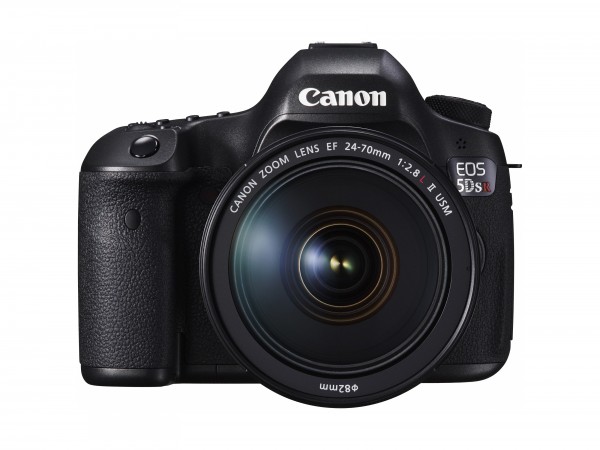With the 5D Mark 3 getting a bit long in the tooth since its introduction in early 2012, Canon supporters have been eagerly waiting for the response to Nikon’s D810.
A lot has changed in the camera world since. Canon not only has to contend with its main digital SLR competitor’s offerings – it also has to look over its shoulders at new mirrorless cameras with improved electronic viewfinders, faster frame rates and enhanced auto focus.
Its answer? The EOS 5DS R and EOS 5DS, the flagships that have been much anticipated by Canon fans seeking the best from the Japanese camera maker.
Both cameras come with a 50.6-megapixel CMOS full-frame sensor, designed by Canon and manufactured by Sony. Like Nikon’s D800E, the Canon EOS 5DS R comes with an additional optical low-pass filter cancellation so that more details can be coaxed from the image capture.
With more megapixels, you’ll need to handle bigger file sizes. That means more powerful processors in the shape of dual Digic 6 chips.
Good news is, you can crop an image aggressively and still have a good amount of detail. An APS-C-sized crop would still yield a 19-megapixel image. That’s pretty close to what you’d get on an EOS 7D Mark 2’s 21-meg sensor.
The new Canons definitely bring on a full bag of features. The 5DS comes with a newly developed mirror vibration control system to dampen any vibrations as the mirror slaps against the camera body, promising to create sharp images.
And if that’s not enough, the camera will only start to record the images after the mirror is fully retracted anywhere from 1/8th of a second to 2 seconds.
I’m not sure about this feature, though. Photographers often like to reduce as much shutter lag as possible, so the introduction of a time lag release, even if it’s to reduce image shake, may seem counter intuitive. Especially so, when you need the camera to react quickly as a moment unfolds.

What of the auto focus and exposure system? The Canon 5DS uses a 61-point high density reticular AF that is only on par with the predecessor. It also has an RGB and infra-red metering sensor that splits the scene into 252 areas to better measure the exposure needed.
While these are unsurprising, what caught my eye were a couple of other things on the specifications list. Interestingly, the Canon 5DS still records at Full HD or 1080p resolution. When most product offerings are now geared towards sharper 4K recording, having only Full HD video capture on the new Canons seems like a step backwards.
Indeed, the 5D Mark 2 has become the darling of independent film makers because taking high resolution video footage has become affordable. It is really a pity that the Canon 5DS couldn’t continue the legacy.
With the increase in file size due to the high resolution sensor, it is little wonder that the continuous shooting speed is capped at 5 frames per second. You’ll need high-capacity, high-speed memory cards. Upgraders should also check that their PCs are fast enough to handle the additional load from post processing to archiving of image files.

Even with the sensor at 35mm size, the number of pixels being squeezed into the sensor would inevitably affect the light capturing ability at the sensor site. With the camera’s ISO speed rated from 100 to the maximum of 6,400, the new Canons may seem to fall behind some high-end mirrorless cameras currently in the market, which offer a wider range.
Make no mistake, Canon’s new flagship models are definitely designed for studio work where the use of studio strobe lighting systems would bring down the ISO level and ensure image quality.
The high-megapixel sensors would also force photographers to set the camera up on tripods to reduce as much shake as possible. That’s because camera movement can be seen pretty easily under close scrutiny.
Studio photographers and landscape enthusiasts will probably find the new Canon cameras the tool of choice for their trade. These users can certainly expect the new shooters to perform very well given the time they need to do their job.
However, the 5DS and 5DS R are definitely not the point-and-gun type of digital SLR camera you would expect from the 5D series.
From what I saw at a Singapore media event last week, they seem to be more of a niche camera rather than the natural successor to the all-rounder that was the 5D Mark 3. They have huge shoes to fill when they arrive here in the middle of the year.








I am happy to see more niche cameras come onto the market. We don’t need more incrementally ‘better’ me-too cameras bloated with all sorts of rarely-used features. As a landscape photographer and backpacker, I want a rugged and lightweight full-frame DSLR that is weather sealed; so far my 6D has been holding up well. I don’t need 4K video or wifi, even. If I ever become interested in action photography, I’d rather shell out another $1,500 for something like a 7D MII than many times more than that for a 1Dx. I have to say, though, that $3700-$3900 is a bit more than I was expecting.
Not much of a hands on, eh? You just read the Canon release